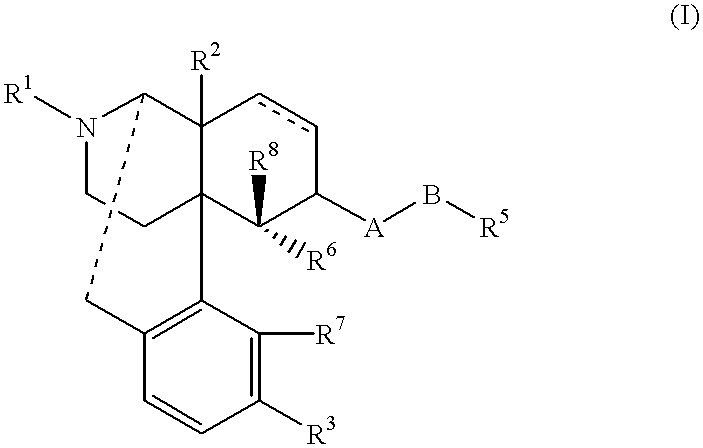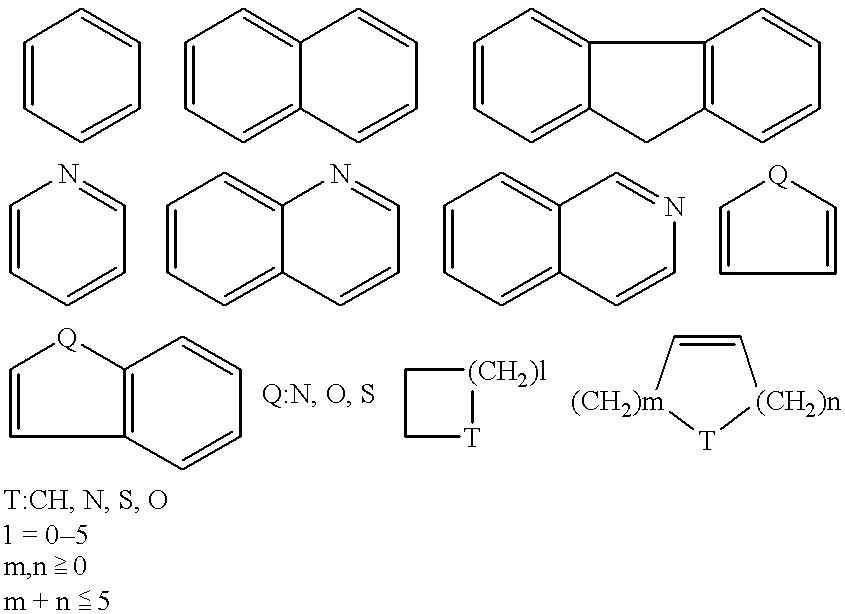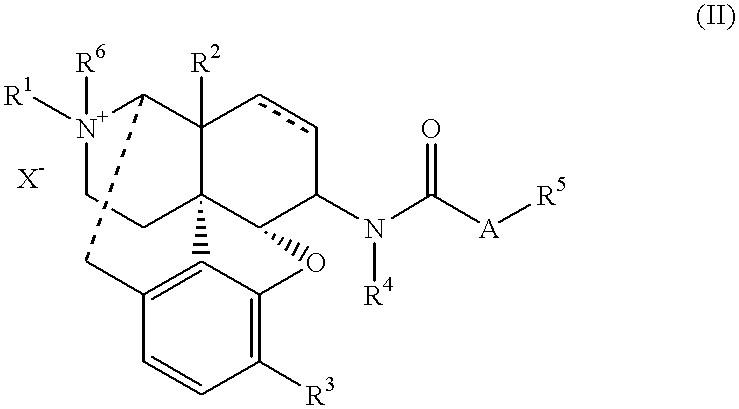Antipruritic agent
a technology of opiate kappa and receptor agonist, which is applied in the direction of drug compositions, biocide, heterocyclic compound active ingredients, etc., can solve the problems of difficult quantitative and objective evaluation, significant disturbance of normal life, and easy bacterial infection
- Summary
- Abstract
- Description
- Claims
- Application Information
AI Technical Summary
Benefits of technology
Problems solved by technology
Method used
Image
Examples
example 1
17-cyclopropylmethyl-3,14.beta.-dihydroxy-4,5.alpha.-epoxy-17-methyl-6.beta.-(N-methyl-trans-3-(3-furyl)acrylamido) morphinanium.idodide 1 ##STR46##
17-cyclopropylmethyl-3,14.beta.-dihydroxy-4,5.alpha.-epoxy-6.beta.-(N-methyl-trans-3-(3-furyl) acrylamido) morphinan 2.0699 g (4.3 mmol), ethyl acetate 60 ml, methanol 6 ml, and methyl iodide 1.3 ml were placed together in a container to be sealed, and, while being sealed, was stirred at 100.degree. C. for four days. To the reaction solution was added methanol 60 ml; the precipitated solid was dissolved and concentrated; and to the resulting residue was added distilled water 400 ml. This aqueous solution was washed with chloroform (100 ml.times.7); the water phase was concentrated; the resulting residue was recrystallized from ethyl acetate-methanol; and the resulting crystal was dissolved in distilled water 500 ml. This aqueous solution was washed with chloroform (100 ml.times.3); the water phase was concentrated; the resulting residue ...
example 2
17-cyclopropylmethyl-3,14.beta.-dihydroxy-4,5.alpha.-epoxy-17-methyl-6.beta.-(N-methyl-3-methoxycinnamamido) morphinanium.iodide 2 ##STR47##
17-cyclopropylmethyl-3,14.beta.-dihydroxy-4,5.alpha.-epoxy-6.beta.-(N-methyl-3-methoxycinnamamido) morphinan 2.0014 g (3.9 mmol), tetrahydrofuran 40 ml, and methyl iodide 1.3 ml were placed together in a container to be sealed, and, while being sealed, was stirred at 100.degree. C. for eight days. To the reaction solution was added methanol 60 ml; the precipitated solid was dissolved and concentrated; and the resulting residue was dissolved by a mixture 120 ml of chloroform and methanol; and extracted by distilled water 200 ml.times.3. The water phase was concentrated; and the resulting residue was recrystallized four times from methanol-distilled water, to give the compound 295 mg in the title.
mp: 176.0-183.0.degree. C. (decomposition)
NMR(600 MHz, DMSO-d6) .delta. 0.37(1H, m), 0.60(1H, m), 0.70(1H, m), 0.77(1H, m), 1.23(1.4H, m), 1.35(0.6H, m),...
example 3
17-cyclopropylmethyl-4,5.alpha.-epoxy-3,14.beta.-dihydroxy-6.beta.-[N-methyl-trans-3-(3-furyl)acrylamido]morphinan-N-oxide 3 ##STR48##
17-cyclapropylmethyl-4,5.alpha.-epoxy-3,14.beta.-dihydroxy-6.beta.-[N-methyl-trans-3-(3-furyl)acrylamido]morphinan 600 mg (1.26 mmol) was dissolved in tetrahydrofuran 30 ml; and to this solution was added dropwise at 0.degree. C. for 15 minutes a solution which was obtained after m-chlorobenzoic acid 348 mg had been added to tetrahydrofuran 8 ml. On completion of the dropwise addition, the reaction solution was stirred at room temperature for about one hour and half, to which was added a mixture of chloroform / methanol (4:1), to dissolve precipitated solid in the reaction solution. The solution was concentrated; the resulting residue was purified by column chromatography [filled with alkaline alumina 20 g and chloroform / methanol (10:0 to 10:1)]; and the yield was recrystallized with ethyl acetate-methanol, to give the compound 473 mg (yield being 76%) ...
PUM
| Property | Measurement | Unit |
|---|---|---|
| Molar density | aaaaa | aaaaa |
| Molar density | aaaaa | aaaaa |
| Molar density | aaaaa | aaaaa |
Abstract
Description
Claims
Application Information
 Login to View More
Login to View More - R&D
- Intellectual Property
- Life Sciences
- Materials
- Tech Scout
- Unparalleled Data Quality
- Higher Quality Content
- 60% Fewer Hallucinations
Browse by: Latest US Patents, China's latest patents, Technical Efficacy Thesaurus, Application Domain, Technology Topic, Popular Technical Reports.
© 2025 PatSnap. All rights reserved.Legal|Privacy policy|Modern Slavery Act Transparency Statement|Sitemap|About US| Contact US: help@patsnap.com



